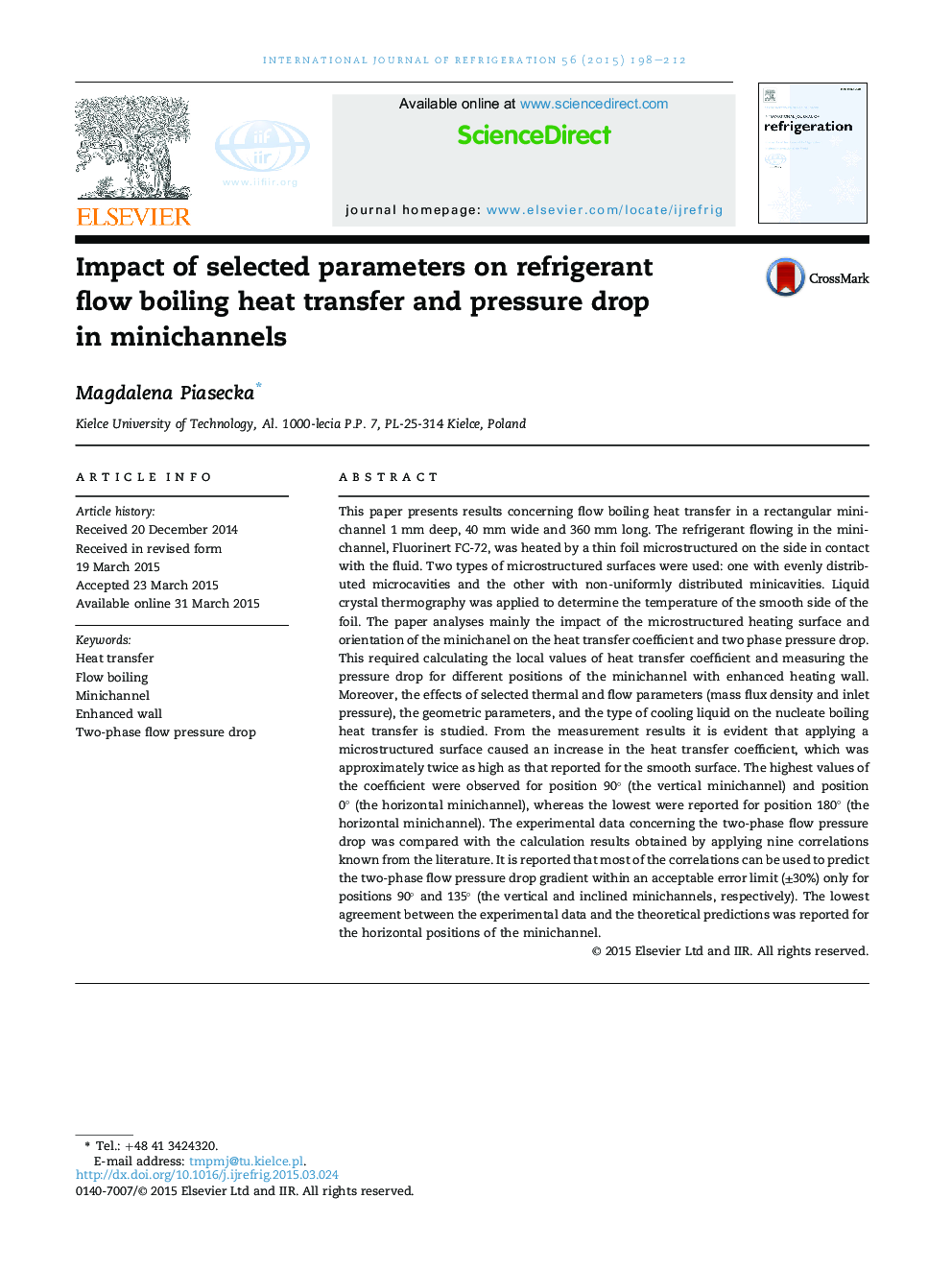| کد مقاله | کد نشریه | سال انتشار | مقاله انگلیسی | نسخه تمام متن |
|---|---|---|---|---|
| 788650 | 1466409 | 2015 | 15 صفحه PDF | دانلود رایگان |
• Minichannel with an enhanced heating wall, with various spatial orientation.
• Detection of temperature on the heating wall due to liquid thermography.
• Determination of refrigerant flow boiling heat transfer coefficient.
• Analysis of selected parameters on boiling heat transfer and pressure drop.
• The most important parameters: channel orientation, type of enhanced surface.
This paper presents results concerning flow boiling heat transfer in a rectangular minichannel 1 mm deep, 40 mm wide and 360 mm long. The refrigerant flowing in the minichannel, Fluorinert FC-72, was heated by a thin foil microstructured on the side in contact with the fluid. Two types of microstructured surfaces were used: one with evenly distributed microcavities and the other with non-uniformly distributed minicavities. Liquid crystal thermography was applied to determine the temperature of the smooth side of the foil. The paper analyses mainly the impact of the microstructured heating surface and orientation of the minichanel on the heat transfer coefficient and two phase pressure drop. This required calculating the local values of heat transfer coefficient and measuring the pressure drop for different positions of the minichannel with enhanced heating wall. Moreover, the effects of selected thermal and flow parameters (mass flux density and inlet pressure), the geometric parameters, and the type of cooling liquid on the nucleate boiling heat transfer is studied. From the measurement results it is evident that applying a microstructured surface caused an increase in the heat transfer coefficient, which was approximately twice as high as that reported for the smooth surface. The highest values of the coefficient were observed for position 90° (the vertical minichannel) and position 0° (the horizontal minichannel), whereas the lowest were reported for position 180° (the horizontal minichannel). The experimental data concerning the two-phase flow pressure drop was compared with the calculation results obtained by applying nine correlations known from the literature. It is reported that most of the correlations can be used to predict the two-phase flow pressure drop gradient within an acceptable error limit (±30%) only for positions 90° and 135° (the vertical and inclined minichannels, respectively). The lowest agreement between the experimental data and the theoretical predictions was reported for the horizontal positions of the minichannel.
Journal: International Journal of Refrigeration - Volume 56, August 2015, Pages 198–212
